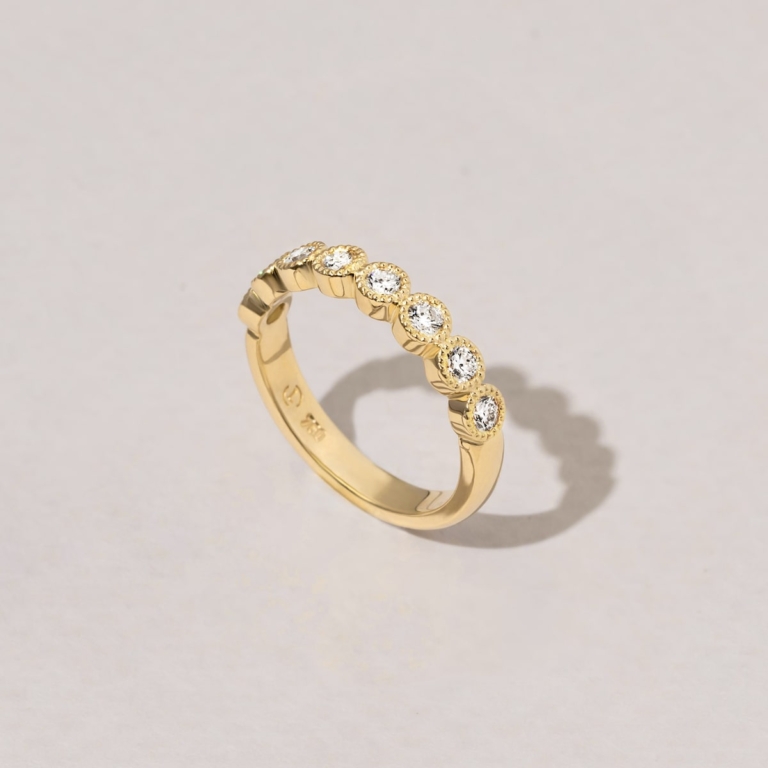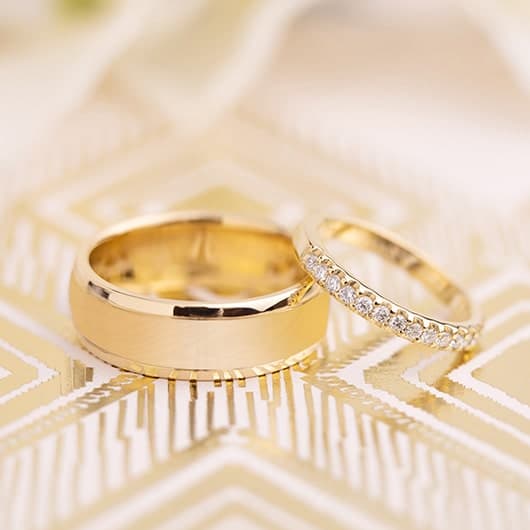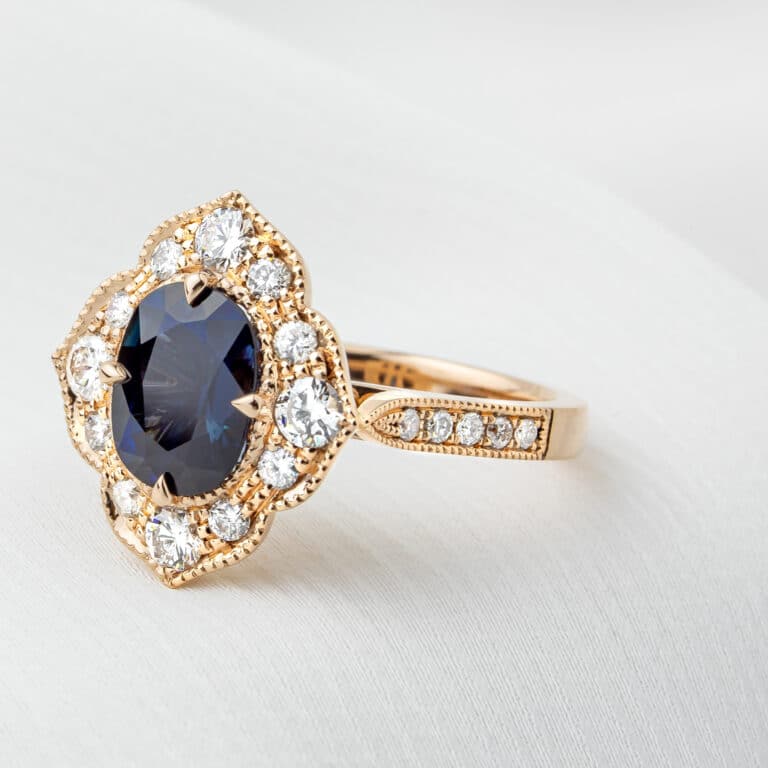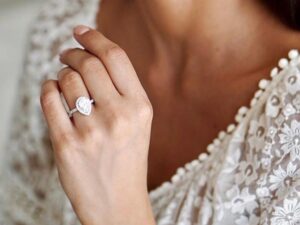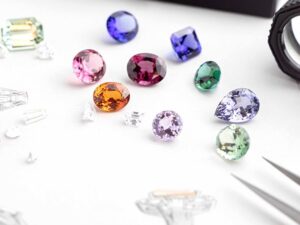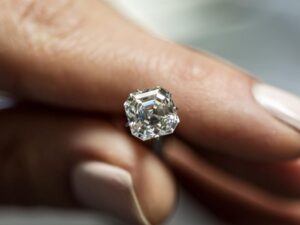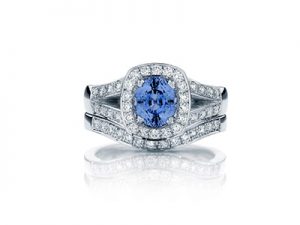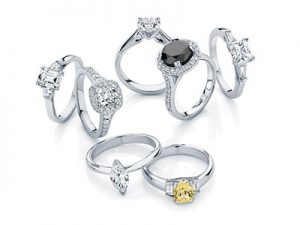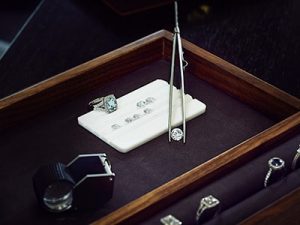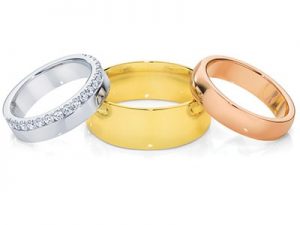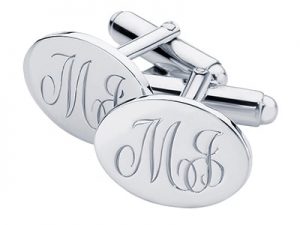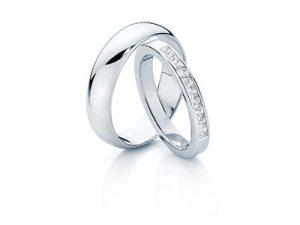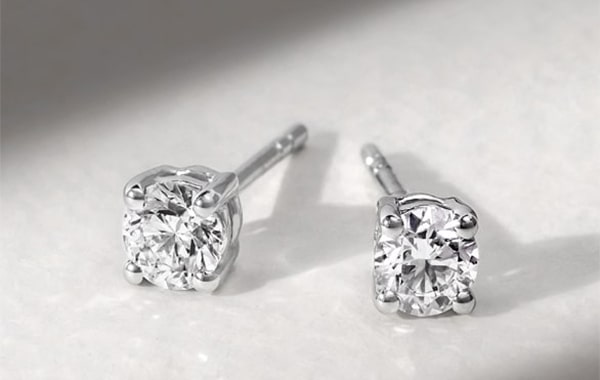Ethical Jewellery Trends 2023: How Consumers are Finding a Diamond in the Rough
by Kate Reid
August 4, 2023 / Design Trends, Jewellery Buying Guide, Positive Initiatives
Fast Insights
- Over 80% of consumers say the ethical standards of a business matter to them
- Over one third would spend more on ethical products
- “Fast Fashion” jewellery made from metal and plastic can take 500 years to biodegrade.
- Worldwide searches for “Slow Fashion” increased by 284% from 2018 to 2022. *
- A ton of platinum produces 77,000 tons of carbon dioxide, whereas a ton of gold generates 38,100 tons of carbon dioxide.
- Producing a pair of heart-shaped gold earrings generates 31 KG of carbon dioxide which is the equivalent of driving a small car 200 km.
- The Jewellery industry can become carbon neutral by offsetting their emissions.
- Larsen Jewellery was the first Jewellery company in Australia to achieve Carbon Neutral status.
- The global searches for “Carbon Neutral” rose from 1,386 per month to 11,329 per month from 2016 to 2022, a surge of 797%. *
- Human Rights Watch Report found 63% of consumers are conscious about supply chains and want shops to have more transparency.
- Tracemark Tech Report found that 94% of consumers believe jewellery brands should be more transparent.
- Blockchain technology and NFT’s are emerging in the jewellery industry to create a global registry of diamonds.
- In 2018, IBM released “Trustchain”, for the jewellery industry to track gemstones from mines to fingers.
- Recycled jewellery is growing in popularity.
- Worldwide searches for “Jewelry Resale” increased by 106% from 2018 to 2022. *
- The first lab grown diamond was made in 1954 but from 2018 to 2022, worldwide searches soared from 154 per month to 14,240 per month. A 9,146% increase. *
- 70% of millennial-age consumers are interested in purchasing lab-grown diamonds for engagement rings.
Ethical Jewellery History
Ethical Jewellery really started trending in the 1990s when the “blood diamond” scandal came to the forefront of public consciousness. It exposed that mined diamonds and the jewellery industry were inundated with conflict gemstones and the impact it had on local communities affected by the entire supply chain. It led to the introduction of the first industry-regulated body in 2003, The Kimberley Process, to safeguard the supply chains and mark jewellery as conflict-free.
Since then, the demand for sustainable and ethical jewellery has grown year on year and shaped new trends in fair trade, recycled, blockchain technologies and eco-friendly lab-grown diamonds.
In a report conducted by IPSOS in 2015, over 80% of consumers said the ethical standards of a business mattered to them and over one third said they would spend more on products that were ethical. The trends for ethical jewellery since then have grown, suggesting more consumers would now answer yes to shopping ethically.
In a Matter of Form report they confirmed that prior to the COVID-19 pandemic, research estimated the jewellery industry to reach $480.5 billion by 2025. And, even though watch and jewellery makers saw a 25% dip in sales in 2020, luxury spending is now rebounding and this sector shows no signs of slowing down. But how does spend affect the trend for ethical jewellery?
The search for ethical jewellery worldwide started at 588 volume per month in 2018 and during the COVID-19 pandemic and lockdowns, the search volume increased to 1,747 by 2021, that’s a 197% increase.
However, even though consumer demand grew, a report by Human Rights Watch noted that the pandemic impacted the Governing bodies’ ability to monitor mining and supply chain transparency, calling for the jewellery industry to take action on corporate social responsibility.
What is Sustainable Jewellery?
Sustainable jewellery is sourced and manufactured with the purpose of having the least environmental impact. The jewellery industry’s sustainable practices include carbon-neutral goals at every level from packaging, shipping and wind and solar-powered production sites.
The global trend for sustainable jewellery has surged each year, rising from 166 searches per month in 2018 to 2,548 in 2022, a 1,434% increase.
Today’s consumers are pushing for a sustainable jewellery industry to take responsibility in waste management, to invest in renewable energy and reduce the toxic chemicals they produce.
Fast Fashion Begins to Impact the Jewellery Industry
Fast fashion, defined as “quantity over quality”, mass produced, cheap fashion that often ends up in landfill, has been gaining Global scrutiny over the past decade, getting a search volume of 8,559 per month in 2018 and increasing to 26,510 in 2023, that’s a 203% increase in 5 years.
Cheap jewellery rose to popularity with fast fashion, an accessible and affordable way for consumers to obtain on-trend pieces. However, as the gold or silver plating fades quickly, most metal and plastic pieces end up in landfill after only a few wears and can take up to 500 years to biodegrade, releasing toxins that are absorbed in the air, soil and water.
The search and trend for “Slow Fashion” has increased year on year as consumers become more aware of the negative impacts of fast fashion. In 2018, slow fashion was getting 634 searches a month and now in 2023 it is hitting 2,435, an increase of 284%. Consumers’ search for slow fashion is a search for sustainable and ethical fashion, including jewellery.
Eco Friendly Jewellery
The jewellery industry’s environmental impact on carbon emissions comes from mining, processing and manufacturing. Everyday household items are made from aluminium and steel, but the metals we use to make jewellery like platinum, gold and silver release more Co2 emissions per tonne. However, according to the Ethical Jewels report, a plain band ring can weigh between 1.87 and 4.01g depending on the metal, but the average aluminium can weighs 14.9g and we make 180 billion cans worldwide a day.
Research Gate and The World Gold Council have both produced reports with research on the greenhouse gas emissions in the Jewellery industry:
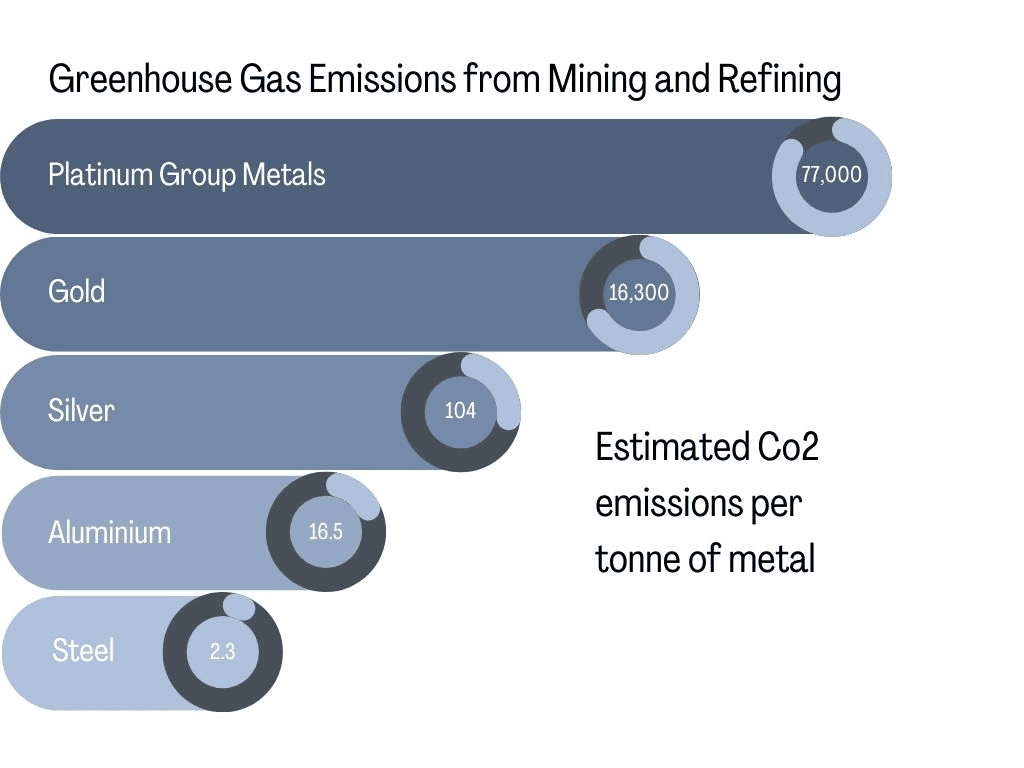
The weight of jewellery pieces is considerably low compared to the weight of household items made from aluminium and steel, however, the trend for eco-friendly jewellery is still pushing the industry to implement sustainability practices.
Larsen Jewellery was the first jewellery company in Australia to achieve carbon neutral status. Part of this process includes offsetting any Co2 emissions caused by the mining of any materials used.
What is Carbon Neutrality?
Carbon Neutral is a commitment a business can take to stop any rise in their carbon emission from mining and manufacturing raw materials and to offset its current emission through carbon credit projects for clean energy. The global search volume for carbon neutral has increased steadily over the past decade, from 389 per month in 2016 to 3,490 searches in 2023, that’s a surge of 797%.
The carbon cost to mine and refine platinum, silver and gold is huge so carbon neutral projects are sustainable practices the jewellery industry can implement. Since 2019, Larsen Jewellery is 100% Carbon Neutral and is committed to keeping their certification every year.
Human Rights and Fair Trade
Jewellery supply chains are gaining more traction, the 2018 Human Rights Watch Report: The Hidden Cost of Jewelry details that 63% of consumers are conscious about supply chains and want to shop from brands that have transparency with responsible sourcing practices. Now, the 2021 Tracemark Tech report found that 94% of consumers believe jewellery brands should be more transparent.
Jewellery supply chains can be complex as gemstones pass through many trades from mining to manufacturing to shops. Even since the Kimberly Process was launched, there are still issues with child labour, unsafe working conditions, no workers’ rights or fair wages. There is now more of a call for the industry to have transparent supply chains to prove they are doing everything they can to get ethically sourced materials.
Fairtrade Gold is the World’s first independent ethical certification system for gold ensuring miners get fair wages and the local communities are respected. Searches for Fairtrade Gold increased from 21 in 2019 to 92 in 2021, a 338% swell and Fairtrade Silver grew from 19 in 2019 to 41 in 2021, 1115% increase, showing a consumer trend and demand for the certification system to expand.
Blockchain Technology
Blockchain technology and NFT’s are trending globally but it is a relatively new initiative in the jewellery industry to create a global registry of diamonds, giving every diamond a unique ID to create transparent supply chains and work to stop the trade in conflict areas. In 2018, IBM released “Trustchain”, for the jewellery industry to track gemstones from mines to fingers as their research showed 66% of consumers are willing to spend more to support sustainable brands.
Since NFT’s became popular in 2017, search trends for the jewellery industry have peaked in 2023. Data from Google trends shows:
- NFT Jewelry +200%
- NFT Diamond +111%
- Blockchain Diamond +272%
- Blockchain Technology +88%
As the global interest for NFT’s and blockchain technology soars, it is assumed consumer demand for the global registry will escalate to meet the trend for a transparent supply chain.
Recycled Jewellery
Recycled jewellery has been trending for the past decade, from January 2018 to July 2023 Google Trends are seeing increasing Worldwide searches in:
- Jewelry resale +106%
- Vintage Jewelry +17.5%
- Second-hand Jewelry +65%
These precious metals and gemstones have already been mined, so the most ethical and responsible sourcing we can do is to recycle them. There is a growing trend for ethical diamonds, vintage or recycled gold showing a consumer shift from brand new to preloved. Larsen Jewellery’s responsible practices will help you take preloved fine jewellery and turn it into a bespoke diamond ring or engagement ring.
Lab-Grown Diamonds
The first lab grown diamond was made in 1954 but since 2018 we have seen a 9,146% increase in search volume per month.
Bypassing the supply chain for mined diamonds, lab grown diamonds are an ethical way for consumers to get a brand new gemstone. The huge peak in search impressions shows a worldwide shift from mined diamonds to this relatively new technology. The CEO Report indicates 70% of millennial-age consumers are interested in purchasing lab-grown diamonds for engagement rings.
However, it is important to note that not all lab grown diamonds would satisfy the trend for sustainable jewellery. The energy used to manufacture lab diamonds is still incredibly high, so it is important to ensure the lab producing your diamond uses renewable energy. Larsen Jewellery’s preferred suppliers use green energy in their factories and any unavoidable emissions are offset making them a 100% carbon-neutral choice.
Summary
Consumer demand for sustainable and ethical products on the whole is increasing year on year and a 1,434% search growth for sustainable jewellery in just 4 years shows consumers are conscious about where they shop. Ethical sourcing and responsible business practices are at the forefront of consumers minds and the industry needs to be more transparent.
Larsen Jewellery obtained Australia’s first carbon neutral status for a Jewellery brand in 2019 and remains the only Jeweller with the responsible practice in 2023.
Since 2018, there has been an emergence of trends such as blockchain technology, recycling metals and carbon neutral manufacturing to meet the consumer trend. They are willing to research and spend more to find a diamond in the rough. In the next 4 years, will consumers spark more sustainable and ethical trends to materialise in the Jewellery Industry?
- Search volume data taken from Ahrefs and Google Trends on 20th July 2023
